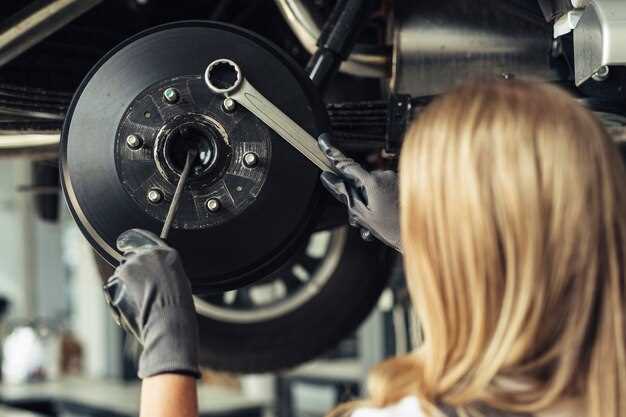
The world of automotive suspension tuning can often seem complex and overwhelming, especially when discussing the concepts of hard and soft suspension setups. Each approach has its own unique characteristics, advantages, and drawbacks, influencing everything from ride comfort to handling performance. Understanding these differences is essential for any enthusiast looking to optimize their vehicle’s suspension for specific driving conditions or personal preferences.
Hard suspension tuning typically emphasizes improved handling and responsiveness. This setup uses stiffer springs and dampers, which can significantly reduce body roll during cornering. The trade-off, however, is a potentially harsher ride quality. Drivers who favor aggressive driving on racetracks or winding roads may find hard suspension ideal, as it enhances control and allows for quicker adjustments to steering inputs.
On the other hand, soft suspension tuning prioritizes comfort and ride quality. This configuration incorporates softer springs and dampers, absorbing road imperfections more effectively and providing a smoother driving experience. While this setup might compromise handling precision at high speeds, it is often preferred for daily driving and long-distance travel, where comfort is a key priority. Understanding these distinctions between hard and soft suspension tuning will empower drivers to make informed choices that align with their specific needs and driving styles.
Understanding the Impact of Suspension Stiffness on Handling

Suspension stiffness plays a critical role in determining a vehicle’s handling characteristics. It directly influences how the car responds to various driving conditions, impacting both comfort and performance. Stiffer suspensions provide increased stability and responsiveness, which can enhance cornering capabilities. However, this comes at the cost of ride comfort, as a firmer setup transmits more road imperfections to the cabin.
When suspension stiffness is increased, the vehicle experiences less body roll during cornering. This reduction in body roll helps maintain tire contact with the road surface, improving traction and allowing for quicker direction changes. Consequently, drivers may notice sharper steering response and increased confidence at higher speeds.
On the other hand, a softer suspension absorbs bumps and irregularities in the road more effectively. This setup can lead to a more comfortable ride, making it suitable for daily driving or long-distance travel. However, excessive softness can lead to the feeling of a vehicle “floating” during aggressive maneuvers, which can compromise handling and stability.
Optimization of suspension stiffness requires a balance between performance and comfort. Factors such as the type of driving (track vs. street), vehicle weight distribution, and tire characteristics all dictate the ideal stiffness level for a specific application. A well-tuned suspension will enhance the driving experience, providing both enjoyable handling and adequate road comfort.
In summary, suspension stiffness is a pivotal factor in a vehicle’s overall performance. Understanding its impact allows drivers and tuners to make informed decisions, tailoring settings to their specific needs and preferences.
How Suspension Tuning Affects Ride Comfort and Stability

Suspension tuning plays a crucial role in defining both ride comfort and vehicle stability. The balance between hard and soft suspension setups influences how a vehicle responds to various road conditions and driver inputs. A soft suspension is typically designed to absorb shocks and bumps more effectively, providing a smoother ride over uneven surfaces. This setup enhances comfort, making it ideal for daily driving and commuting, especially on poorly maintained roads.
However, while a soft suspension improves comfort, it can compromise stability. Excessive body roll during cornering and less precise handling are common drawbacks, as the softer springs and dampers allow for greater weight transfer. This can lead to a feeling of vagueness in steering and a decrease in overall control, particularly at higher speeds or aggressive driving scenarios.
In contrast, a hard suspension focuses on improved handling and stability at the expense of ride comfort. When tuned stiffer, the vehicle remains better connected to the road, resulting in reduced body roll during cornering and enhanced responsiveness to driver input. This setup is often preferred for performance driving, as it allows for more precise control and stability during high-speed maneuvers.
Nevertheless, the trade-off is significant; drivers may experience a harsh ride, with increased impact from road imperfections evident inside the cabin. This can lead to fatigue over long distances and may deter casual drivers from embracing a hard suspension setup.
Ultimately, the choice between soft and hard suspension tuning hinges on individual priorities. Drivers seeking a balance between comfort and performance might benefit from adjustable suspension options that allow for tailored setups based on specific driving conditions. Understanding how suspension tuning impacts ride comfort and stability enables enthusiasts and everyday drivers alike to make informed decisions regarding their vehicle’s performance characteristics.
Choosing the Right Suspension Setup for Your Driving Style
When it comes to suspension tuning, selecting the appropriate setup is crucial to enhance both performance and comfort, depending on your driving style. Different styles require unique suspension characteristics to optimize vehicle handling and ride quality. Here, we will explore various driving styles and their corresponding ideal suspension setups.
Before making any decisions, consider the following driving styles:
- Daily Driving: For those who primarily use their vehicle for commuting, a soft suspension setup is typically preferred. This setup ensures a comfortable ride over a variety of road conditions by minimizing harshness and absorbing bumps effectively.
- Performance Driving: Enthusiasts looking for sporty handling may opt for a hard suspension setup. A stiffer spring and damper configuration reduces body roll and improves responsiveness during cornering, which enhances overall vehicle dynamics.
- Off-Roading: If you frequently tackle rugged terrains, consider adjustable suspension options that combine both soft and hard characteristics. Softer settings can provide better traction and comfort on uneven surfaces, while harder settings can help maintain control during high-speed maneuvers.
- Track Racing: For dedicated track use, a firm suspension setup is essential. It reduces body movement and keeps tires in contact with the ground, maximizing grip. Adjustable coilovers are often used to fine-tune settings based on track conditions.
To make the right choice, evaluate the following factors:
- Driving Conditions: Assess the roads you typically travel. If potholes and rough surfaces are frequent, a softer setup may be beneficial.
- Vehicle Type: Sedans, sports cars, and SUVs have different weight distributions and uses. Choose a suspension type that complements your vehicle’s characteristics.
- Personal Preferences: Determine whether you prioritize comfort over performance or vice versa. This will significantly influence your suspension selection.
- Budget: Suspension systems vary in price, particularly adjustable systems. Set a budget that accounts for both parts and installation costs.
Your driving style plays a vital role in determining the best suspension setup. Take time to test different configurations if possible, as this could lead to finding the perfect balance between comfort and performance tailored to your unique needs. Remember, the ultimate goal is to enhance your driving experience while ensuring safety and reliability.